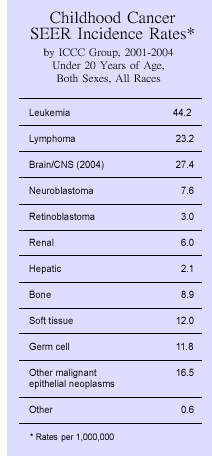
 It is perhaps a good problem to have: Many more experimental cancer drugs enter clinical evaluation in adults each year than can realistically be tested in children, given the small number of children with cancer eligible for early-stage clinical trials.
It is perhaps a good problem to have: Many more experimental cancer drugs enter clinical evaluation in adults each year than can realistically be tested in children, given the small number of children with cancer eligible for early-stage clinical trials.
This means that investigators have to prioritize agents, and their decisions have consequences. If 20 new drugs are available for study, but only one or two can be tested in children each year, then picking an agent that lacks an effect against childhood cancers may delay or prevent an agent that is truly effective from being investigated.
So how can investigators improve their chance of making good decisions about which new agents to bring forward for pediatric clinical testing? One way may be to test candidate agents in the laboratory using pediatric cancer cell lines and animal models. Launched in 2004, the NCI-sponsored Pediatric Preclinical Testing Program (PPTP) is doing this by testing 12 new agents a year against its panel of childhood cancer preclinical models.
The project is an experiment, and it will not be known for several more years how well the models predict anticancer activity in patients. But early results are encouraging. The researchers have provided validation for the strategy by showing that standard chemotherapy drugs have similar effects in the preclinical models as in patients. Importantly, the program has already identified several novel agents that show substantial activity against one or more of the PPTP's childhood cancer tumor panels.
A recent PPTP report in Pediatric Blood Cancer describes a drug with anticancer activity against several solid tumors. The drug, SCH 717454, is a monoclonal antibody against the insulin-like growth factor 1 receptor (IGF-1R), which has been implicated in many pediatric solid tumors. Another PPTP publication reported that ABT-263, a small molecule inhibitor of Bcl-2 family proteins, has substantial single agent activity against acute lymphoblastic leukemia cell lines and xenografts.
"The project is providing useful ideas about new agents and combinations of therapies that can be studied in children," said principal investigator Dr. Peter Houghton of St. Jude Children's Research Hospital. The PPTP's research teams have more than 60 animal models and 27 cell lines available for testing, representing most of the more common cancers that occur in children.
The program tries to evaluate new agents near the time that they are entering clinical trials in adults. This allows pediatric preclinical data to be developed while adult phase 1 trials are ongoing so that the preclinical data can then inform decision-making about clinical evaluations of agents tested in children. The adult trials provide information about the drug blood levels that are tolerated in humans, and this information can be modeled in mice to learn whether children are likely to tolerate a dose of the agent that is active against preclinical models.
"The critical issue in terms of translation from the preclinical model to the clinic is using doses in the animal that produce blood levels that you can achieve in the patient," noted Dr. Houghton.
More than 20 pharmaceutical companies have submitted one or more agents for testing. "The willingness of these companies to collaborate with the PPTP has been very encouraging and is central to the success of the program," said Dr. Malcolm Smith of NCI's Cancer Therapy Evaluation Program, who oversees the PPTP.
|